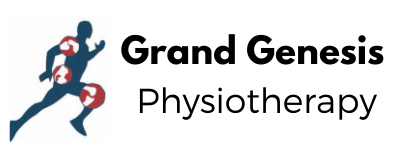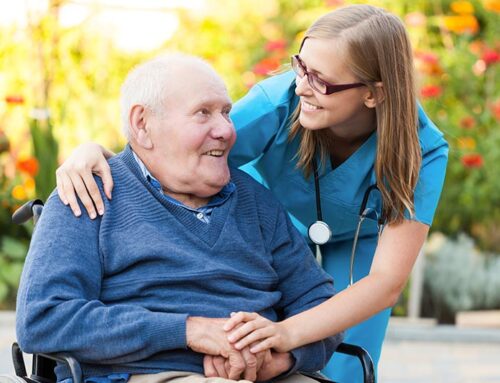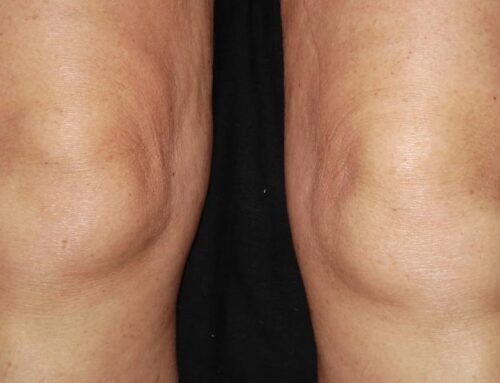A leg massage can relieve sore, tired muscles. The benefits vary depending on how much pressure you apply. Using light pressure can be more relaxing. Strong pressure reduces tension and pain in your muscles.
A massage also stimulates your nervous system and can enhance your circulation.
There are different ways to massage your legs. Three different methods that vary by the hand motion you use are described below.
Stroking motion
- With your palm facing your leg, place your slightly spread fingers on your ankle. You can use one hand or both hands placed opposite each other.
- Apply pressure with your fingers as you move your hand toward your hip. Apply enough pressure to feel it in your muscle without causing pain. You can also alternate between light and heavy pressure.
- Move your fingers back to your ankle and repeat the movement as your work your way around your entire leg.
- Repeat up to 10 times per leg.
Tips
- For more pressure, use your palm or the heel of your hand instead of your fingers.
- You can use this motion on the top and bottom of your foot as well.
Chopping or percussion motion
- Starting at your ankle, gently hit your leg muscles with your fist. Alternatively, use the pinkie side of your hand in a chopping motion.
- Work your way up your leg, concentrating on areas that are sore or feel tight.
- Continue up your leg to your hip.
- Repeat, working your way around your leg.
Tip
- This method works well on the bottom of the feet but isn’t very effective for the top of your foot or your toes.
Squeezing and kneading motion
- Wrap the fingers of one or both hands around your ankle.
- Work your way up your leg, squeezing the muscle with your fingers using your thumbs to apply more pressure if you like.
- Continue up your leg to your hip.
- Repeat, working your way around your leg.
Tip
- You can include your feet by squeezing your toes and by squeezing your foot with your thumb underneath it and your fingers on top.
Massage technique tips
- You can massage your lower leg while seated then stand to massage your upper leg — or the entire massage can be done while standing or lying down.
- Apply an oil or lotion to reduce friction and make it easier to move your hands over your skin.
- You can apply the most pressure using your elbows, thumb, knuckles, fist, and the heel of your hand.
- Your fingers provide the least amount of pressure.
Any of the massages described above can be used to give a leg massage to another person. A more complete massage to give someone else is described below.
- Have the other person lie comfortably on their back.
- Hold one foot with both hands placing your thumbs on the sole.
- Knead and rub the sole with your thumbs and the top of the foot with your fingers using firm pressure.
- Move up the leg starting with the calf.
- Rub the calf muscles with both hands using long upward strokes.
- Use your thumbs, forearm, or the heel of your hand to apply more pressure in spots where the muscle feels tight or has knots.
- Continue this process as you move up the thigh to the hip making sure to include all the muscles in the upper leg.
- Repeat on the other leg.
Tips
- Apply oil or lotion as needed during the massage if you choose.
- Another way to reduce friction is to have fabric between your hand and their leg.
- Always stroke upwards toward the heart to enhance circulation.
- Try to keep your hands in contact with person’s leg throughout the massage.
- Avoid using a lot of pressure on areas where the bones are close to the surface, such as the knee.
How to give a leg massage for circulation
The massages described above may improve your blood circulation. The pressure from the massage can move stagnant blood out of congested areas. It’s then replaced with fresh oxygenated blood. But, some doctors think the effect isn’t very big.
Passive range of motion exercises are a good way to improve your circulation. They’re more like stretching than getting a massage. They can be done in addition to massage to improve the circulation in your lower extremity.
Tips
- These exercises should be done with a smooth motion.
- The movement should be enough to feel a stretch but not pain.
Hip bend
- Sit in a chair or on the floor.
- Grasp the shin of your right leg with both hands.
- Bend and pull your knee toward your chest and hold for 30 seconds.
- Relax your leg.
- Repeat until you’ve done 10 repetitions.
- Switch legs and repeat the exercise on your left leg.
Hamstring stretch
- Sit on a chair with your right foot flat on the floor and your left foot resting on another chair or other flat surface, keeping your left leg parallel to the floor.
- Keeping your torso straight, lean forward from your hips until you feel a stretch in the back of your leg.
- Without bouncing, hold the stretch for 30 seconds.
- Go back to your original position.
- Repeat 10 times.
- Switch legs and repeat the exercise on your right leg.
Foot bend
- Sit and cross your legs so the side of your right lower leg rests on top of your left thigh.
- Hold your right foot with one hand on your heel and the other on the top of your foot.
- Relax your foot and ankle.
- Using your hands, move your foot clockwise 10 times.
- Continue holding your foot and move it counterclockwise 10 times.
- Bend your foot up and hold for 30 seconds then bend your foot down and hold for 30 seconds.
- Repeat until you’ve done 10 repetitions in each direction.
- Switch legs and repeat on your left foot.
Toe bend
- Sit with the side of your right lower leg resting on your left thigh.
- Using your hand, bend your toes up and hold for 30 seconds.
- Bend your toes down and hold for 30 seconds.
- Repeat until you’ve done 10 repetitions in each direction.
Other ideas and ways to do self-massage
Some everyday objects and exercise devices are helpful for massaging your legs. All of these techniques relax your muscles and improve blood flow to the area.
Tennis balls
- Hamstring massage #1. Sit on a chair and place the tennis ball under your thigh. If you have a tender spot, place the ball directly underneath it. Use your body weight to move the ball around.
- Hamstring massage #2. Place the ball under your thigh just below your hip. Hold it there for 30 seconds then move it an inch or two toward your knee and hold it there for 30 seconds. Repeat until you’re almost to your knee.
- Calf massage. Lie on the floor and perform the techniques described above with the ball under your calf.
- Foot massage. Place the ball under your foot and roll it around. Use more or less of your body weight while seated or standing to change pressure.
Foam roller or rolling pin
A foam roller is a cylinder made of hard foam or plastic.
Place it on the floor under the front, side, or back of your upper or lower leg. Using the weight of your leg and body, gently roll your leg over the roller. A rolling pin can be used in place of a foam roller.
Roller stick
This is a rod with plastic or rubber rollers in the middle.
Hold the stick with both hands and roll it over the muscles in your leg. Vary the amount of pressure so it works your muscle without being painful. A rolling pin can be used in the same way.
Roller ball
This is a moveable ball in a handheld case. Hold the device in one hand and roll it over your leg muscles, focusing on sore spots. A lacrosse ball can be used in in the same way.
Foot and calf massage machines
There are two types of machines you can use to massage your calves and feet.
Air compression massagers
Plastic or cloth material containing multiple airbags is wrapped around both your left and right lower legs and feet and secured with a zipper or Velcro. Air slowly fills and then leaves the airbags.
The increase in the pressure around your feet and legs followed by a decrease gently massages them.
Shiatsu foot and calf massagers
You put your lower legs and feet into this device. Generally, they only cover your feet and the sides and back of your legs, so your shins aren’t included in the massage.
Massage is provided by airbags that squeeze and release your legs and by rollers that knead the muscle. Often, there’s the option to use vibration and heat too.
When not to massage
In cases of certain conditions and use of some medications, you might need to avoid or alter any massage.
Leg massage shouldn’t be done if:
- you have or think you have a blood clot in a calf vein
- you’re at higher risk of developing blood clots in your inner thigh veins because you’re pregnant (massaging the leg excluding your inner thighs is OK)
- your legs are swollen with fluid, especially if they’re weeping
- you have skin breakdown or open sores on your legs
- your skin is tender or you have a rash due to a flare of an autoimmune disease, such as lupus or scleroderma
- the sensation in your legs is decreased due to peripheral neuropathy, especially if you have diabetes
- you’re at high risk of bruising or hematoma formation because you have a low platelet count or are on blood thinners
- you have painful varicose veins
- your bones are brittle from severe osteoporosis



